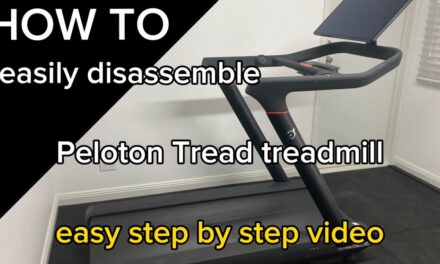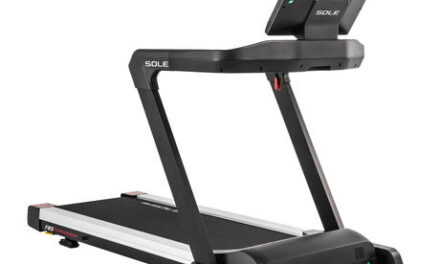You’re in for a treat today as we dive into the world of fitness and explore the wonders of a manual treadmill. Curious about what exactly it is and how it can benefit your workouts? Look no further! In this article, we’ll break down the ins and outs of manual treadmills, shedding light on their functionality, advantages, and even a few tips on how to get the most out of your treadmill workouts. So buckle up and get ready to learn all you need to know about manual treadmills. Let’s get started!
What Is a Manual Treadmill?
If you’re considering getting a treadmill for your home gym or personal fitness routine, you may have come across the term “manual treadmill.” But what exactly does it mean? In this comprehensive article, we will explore the definition, how a manual treadmill differs from motorized treadmills, the benefits it offers, as well as some downsides to consider.

This image is property of cdn.shopify.com.
Definition
A manual treadmill is a type of fitness equipment that allows you to walk, jog, or run in place without the assistance of a motor. Unlike motorized treadmills, which power the belt to move, a manual treadmill relies solely on your movement to set the pace. It may have a simple and straightforward design, but it can still provide an effective cardiovascular workout.
How It Differs from Motorized Treadmills
Operational Mechanism: The most significant difference between a manual treadmill and a motorized one lies in the operational mechanism. As mentioned earlier, a manual treadmill requires your physical effort to move the belt, while a motorized treadmill uses a motor to power the belt’s movement.
Speed Control: Another difference is in the speed control. Motorized treadmills typically have adjustable speed settings, allowing you to choose your desired pace. On the other hand, manual treadmills have a non-adjustable speed, and your pace primarily depends on your physical effort exerted.
Power Source: Motorized treadmills require electricity to run the motor and control the speed settings. In contrast, manual treadmills don’t need any external power source, making them energy-efficient and convenient for various settings, including outdoor use.

This image is property of www.verywellfit.com.
Benefits
Affordability: One significant advantage of manual treadmills is their affordability. They tend to be more budget-friendly than motorized counterparts since they lack the expensive motor and electronic features. If you’re on a tight budget, a manual treadmill might be a practical choice.
Portability and Space-saving: Manual treadmills are known for their compact and lightweight design, making them highly portable and space-saving. They are perfect for smaller homes, apartments, or those who frequently move their exercise equipment around.
No Electricity Required: With a manual treadmill, there’s no need to worry about electrical outlets or power cords. You can use it anywhere, indoors or outdoors, without relying on electricity. This feature makes it an excellent option for those who enjoy exercising in nature or prefer a sustainable workout routine.
Better for Overall Fitness: Since manual treadmills require more effort to move the belt, they provide a more challenging workout experience. This increased effort can lead to better overall fitness, enhanced cardiovascular endurance, and improved muscle strength and tone.
Higher Calorie Burn: Due to the increased physical effort required to operate a manual treadmill, you can burn more calories compared to using a motorized treadmill at the same speed. If weight loss is your goal, a manual treadmill can be an effective tool to help you achieve it.
Greater Muscle Engagement: When using a manual treadmill, you engage more muscles throughout your body, including your legs, core, and upper body. This is because you need to exert more force to move the belt, leading to increased muscle activation and a more comprehensive workout.
Downsides
Limited Speed Options: One of the downsides of manual treadmills is that they typically offer limited speed options. Since the speed solely depends on your physical effort, you won’t be able to adjust the pace as easily as you can on a motorized treadmill. This limitation may affect your ability to do high-intensity workouts or interval training.
Lack of Incline Feature: Unlike motorized treadmills, many manual treadmills lack an incline feature. Incline settings can simulate uphill running or walking and provide a more challenging workout. If you prefer exercising on an incline or want to target specific muscle groups, a manual treadmill may not be the best choice.
Less Cushioning: Motorized treadmills often come equipped with cushioned belts to minimize impact on joints and reduce the risk of injury. Manual treadmills usually have less cushioning or no cushioning at all, which may increase the strain on your joints and result in a higher risk of discomfort or injury.
Manual Effort Required: As the name suggests, manual treadmills require manual effort to keep the belt in motion. This means you’re responsible for controlling the speed and maintaining a consistent pace throughout your workout. This manual effort can be tiring for some individuals, especially during longer workout sessions.
Risk of Strain or Injury: Due to the lack of cushioning and the need to exert more force, there is a higher risk of strain or injury when using a manual treadmill. It’s crucial to listen to your body, start slowly, and gradually increase your intensity to avoid overexertion or potential injuries.
Potentially Noisy: While it may not be a concern for everyone, some manual treadmills can be noisier compared to their motorized counterparts. The belt movement and moving parts may create a certain level of noise, which can be bothersome if you prefer a quiet workout environment.

This image is property of i0.wp.com.
Explanation of Manual Treadmill
Definition and Design: A manual treadmill is designed to operate without a motor, relying on your physical effort to set the pace. It typically features a simple and compact design compared to motorized treadmills.
Belt and Roller System: The belt of a manual treadmill is made of durable material and wraps around two rollers. As you walk, jog, or run on the treadmill, the movement of your feet propels the belt, creating a smooth and continuous motion.
Frame and Handlebars: The frame of a manual treadmill provides stability and support. It is usually made of sturdy materials such as steel or aluminum to handle the user’s weight and movement. Handlebars are also included to help maintain balance and provide a secure grip.
Console and Display: While not all manual treadmills have advanced console features, some models may include a basic console that tracks essential workout data such as distance, time, speed, and calories burned. This information can help you monitor your progress and stay motivated during your workouts.
Components of a Manual Treadmill
Belt: The belt is the main component of a manual treadmill. It is where you walk, jog, or run in place. The quality and durability of the belt material play a crucial role in ensuring a smooth and comfortable workout experience.
Rollers: Manual treadmills typically have two rollers, one on the front and one on the back. These rollers allow the belt to move with ease as you step or run on the treadmill, providing a consistent and reliable performance.
Frame: The frame of a manual treadmill provides the structure and support for the entire equipment. It is typically made of robust materials like steel or aluminum to ensure stability and durability during your workouts.
Handlebars: Handlebars offer stability and support while using a manual treadmill. They provide a secure grip, allowing you to maintain balance and control your body position as you exercise.
Console: While not all manual treadmills have a console, some models may include a basic one. The console provides essential information such as distance, time, speed, and calories burned, helping you track your progress and stay motivated.
Display: If a manual treadmill includes a console, it will likely have a display to show the workout data. The display can be a basic LED screen or a more advanced LCD screen, depending on the model.

This image is property of mindbodygreen-res.cloudinary.com.
Operational Mechanism
No Motorized Operation: Unlike motorized treadmills, which rely on a motor to power the belt’s movement, manual treadmills do not have any motorized operation. This lack of motorization contributes to their simplicity and energy-efficiency.
Belt Movement through Human Power: With a manual treadmill, the belt movement is entirely dependent on your physical effort. As you walk, jog, or run, your feet push against the belt, causing it to move. The faster you move, the faster the belt will go.
Speed Control
Non-adjustable Speed: Unlike motorized treadmills with adjustable speed settings, manual treadmills have a non-adjustable speed. The pace you set depends entirely on your physical effort. If you want to increase your speed, you need to put in more effort by walking, jogging, or running faster.
Determining Speed Through Effort: Since manual treadmills don’t have speed controls, you determine your speed based on your effort. If you want to go faster, you need to increase the intensity of your physical movement. Conversely, if you want to slow down, you can reduce your effort and allow the belt to gradually come to a stop.
This image is property of target.scene7.com.
Potentially Noisy
Noise from Belt Movement: Some manual treadmills may produce noise due to the movement of the belt. The friction between your feet and the belt can generate a certain level of sound, which may vary depending on the quality of the treadmill.
Moving Parts: Additionally, certain components and moving parts of a manual treadmill may also contribute to noise. The rollers, frame, and handlebars can produce noise when in use. While the noise level may not be excessive, it’s worth considering if you prefer a quieter workout environment.
In conclusion, a manual treadmill is a versatile and cost-effective fitness equipment option for those seeking an efficient cardiovascular workout without relying on electricity or a motor. It offers benefits such as affordability, portability, and increased muscle engagement. However, it does have some downsides, including limited speed options, lack of incline feature, and potentially noisy operation. Understanding the components and operational mechanism of a manual treadmill can help you make an informed decision when choosing the right fitness equipment for your needs.






